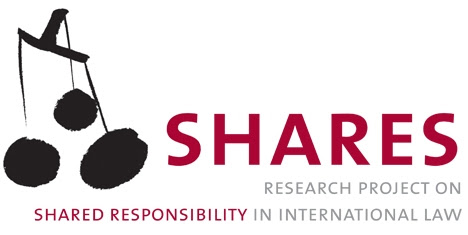Posted by: Nollkaemper André
On 24 April, the District Court of the Hague in the Netherlands ordered Frans van Anraat, a Dutch national, to pay compensation to 17 victims of chemical weapon attacks by the regime of Saddam Hussein in 1988. The judgment raises interesting questions from a shared responsibility perspective, as Van Anraat obviously only was one of many contributors to the eventual injuries.
The case was brought by 17 survivors of the 1988 attack on the Kurdish city of Halabja in Iraq, in which an estimated 5,600 civilians were killed. Saddam Hussein ordered the Halabja attack as part of a crackdown on a Kurdish rebellion in the north, during the final months of the war with Iraq.
In the 2007 judgment in the criminal trial, the Court had found that Van Anraat was Iraq’s sole supplier of a chemical substance used in the production of mustard gas. He had claimed that he believed the chemical was to be used in the Iraqi textile industry. The Court rejected that argument in the criminal trial, saying that he knew the chemicals might well be used for war crimes. Van Anraat is now serving a prison sentence in the Netherlands.
In the present judgment, the Court dealt with the separate question of liability. It found on the basis of the applicable law of Iraq that Van Anraat had acted wrongfully vis-à-vis the plaintiffs. It rejected, also on the basis of Iraqi law, the defense based on the statute of limitations, and ordered Van Anraat to pay each survivor €25,000.
The practical impact of the judgment may be limited, as Van Anraat is believed to be out of funds. But the holding that a person who contributed to international crimes is potentially not only criminally liable, but can also be sued for damages, may be an important precedent for future cases.
The facts of the case raise fascinating questions of shared responsibility. For whatever may be proven in terms of knowledge and conduct of Van Anraat, it is clear that there was a multiplicity of actors who contributed to, or committed, the attack in Halabja. These actors include the state of Iraq, Saddam Hussein himself, and other persons part of his regime. This argument that Van Anraat’s role was marginal compared to these others was indeed raised by the defense.
The Court rejected this, and found Van Anraat to be jointly and severally liable. It relied on an expert report by Haider Hamoudi (University of Pittsburgh). Hamoudi informed the Court that under Iraqi law, compensation for any intentional, wrongful act was due if three elements were established: fault, harm and a causal link between the fault and the harm. The key question for the Court concerned the third element, the causal link ‘in particular in cases where there are two or more potential wrongdoers who have caused the fault’. On this point, Hamoudi wrote that ‘the general rule is one of joint and several liability in the case of two or more causes of fault’, only subject to an exception when the causal link between fault and harm is broken because of the act of a third party. Hamoudi concluded on the facts that ‘Iraqi law would regard the defendant in this case jointly and severally responsible for damages owed to the Iraqi victims.’
The Court followed this analysis. In response to Van Anraat’s argument that he did not commit a wrong since it was not him who had produced the mustard gas, the Court held that Van Anraat knew, when delivering the chemicals to the Hussein regime, that the weapons would be produced and used. And, crucially, that his delivery was an essential part in the causal chain. That being so, the exception to the rule of joint and several liability (that is: the situation when the causal link as between fault and harm is broken because of the act of a third party) did not apply, and there was sufficient basis to hold Van Anraat liable.
The judgment raises many prospects and questions. What is the relationship between joint and several liability and the eventual determination of the amount of compensation? Would Van Anraat have, under Iraqi law, recourse to other wrongdoers (the state of Iraq?). And what impact would the award of damages may have in a (perhaps hypothetical) future case where other contributors are brought to court – whether at the international or national level. These questions call for further consideration. But as it is, the judgment is a fascinating example of the power of joint and several liability in cases of multiple wrongdoers.
